Anthropology
The Campaign to Thwart Paleogenetic Research Into North America's Indigenous Peoples
In the north, the Maritime Archaic gave way to Pre-Dorset Palaeoeskimos (as they are known in the literature) that had recently arrived from Siberia.

One of the major North American archaeological discoveries of the 20th century was made in 1967 by a bulldozer crew preparing a site for a movie theater in the small fishing village of Port au Choix (PAC), on Newfoundland’s Northern Peninsula. It was a vast, 4,000-year-old cemetery created by a complex maritime culture known among researchers as the Maritime Archaic. The graves contained beautifully preserved skeletons covered in a brilliant red powder called red ocher (powdered specular hematite). Buried with the skeletons were many finely crafted artifacts. A few similar ones had previously turned up in earlier field surveys on the island, but no archaeologist had suspected that such a large and magnificent ceremonial site existed in the North American subarctic.
Had the discovery been made only a few years earlier, it is likely that no trained archaeologist would have taken over from the bulldozer crew. But fortunately, Memorial University in St. Johns had just added archaeologist James (“Jim”) Tuck (1940–2019) to its faculty. The American-born scholar set out to explore the cemetery, eventually excavating more than 150 graves spread over three clusters (which he referred to as loci).
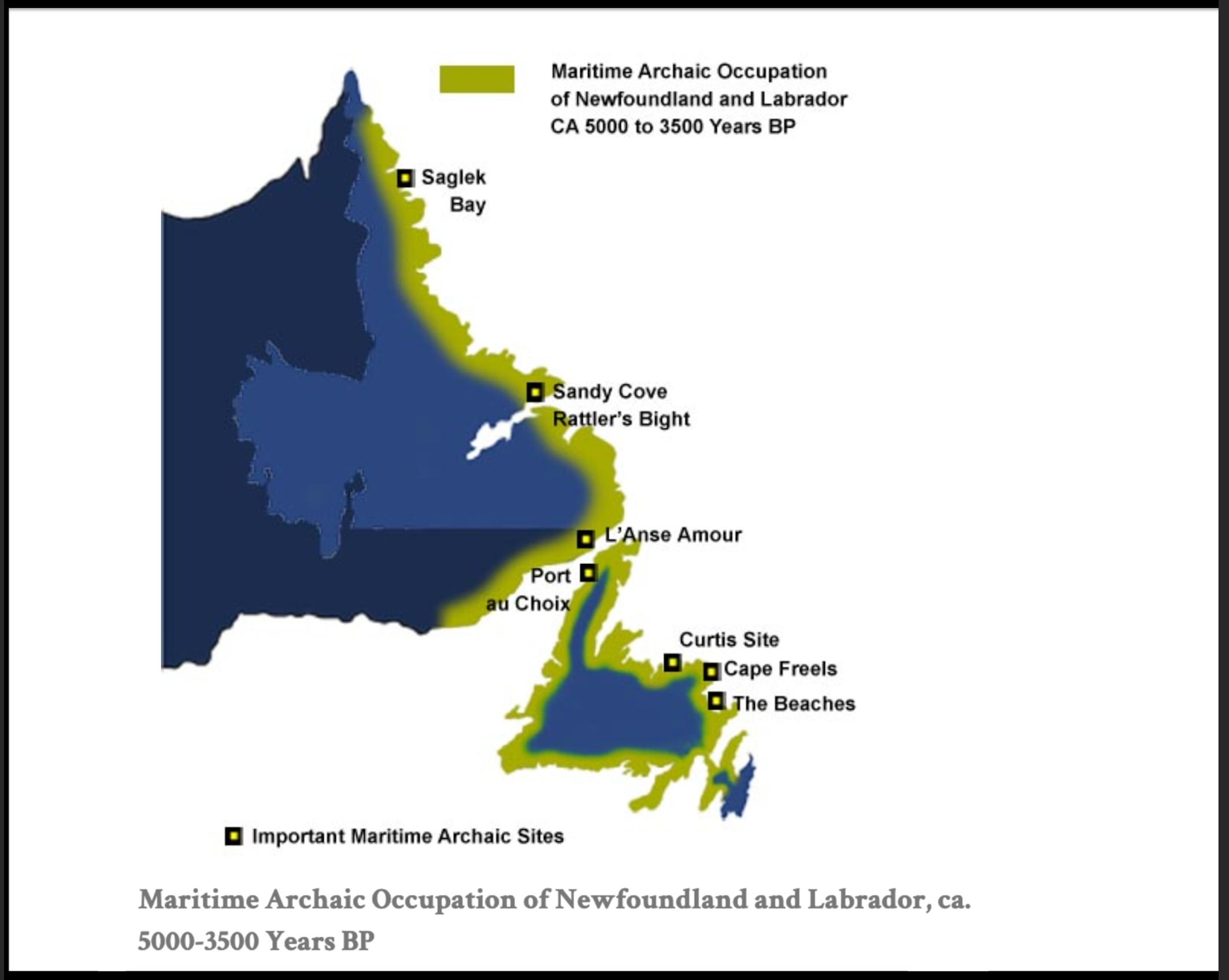
Jim and I had both been field-trained by American archaeologist William Ritchie. We had never worked together, but stayed in close contact. As Bill’s protégés, the two of us were among the first generation of professionally-trained archaeologists to take the field in north-eastern North America outside New York State. Many of us shared a common objective, which was to track down a culture (or was it a series of cultures?) dating from between 4,000 and 5,000 years ago, which had left behind stone artifacts similar to those from PAC, and deposited them in ocher-filled graves extending from Maine to Ontario; and now, it had been discovered, Newfoundland.
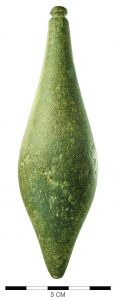
We suspected that the communities represented by these cemeteries were linked, because of their similarly beautiful stone adzes, spear tips flaked from unusual rock types, elegant lance-tip-like objects made of ground slate, and tear-drop-shaped stone weights (called “plummets”). All of these artifacts, like the cemeteries themselves, differed from anything produced by more recent prehistoric peoples.
Prior to the discovery of PAC, the most studied of these early cultures was known from the dozens of cemeteries found along and near the Maine coast near Portland, extending as far east as Grand Lake, in New Brunswick. Locally known as the “Red Paint People” because of their ocher-filled graves, they became a focus of intense interest as scientific archaeology emerged in the 1880s.
Tuck’s discovery at PAC sparked animated discussions and interpretive disagreements among us, with debate focusing on the Maritime Archaic and its relationship to the Red Paint People. The similarities were undeniable. Aside from sharing high-quality lithic technology, both had developed sophisticated bone and antler technologies, including long daggers, toggling and barbed harpoons of the type used by Inuit hunters, bone needles (probably indicative of tailored clothing, which is a rarity among hunting and gathering Indigenous North Americans south of the Arctic), and nearly identical shaman’s paraphernalia. Moreover, both populations evidently contained accomplished hunters of large marine animals, and seemed to take spiritual inspiration from the sea, manifested in the Maritime Archaic by effigies of marine birds and killer whales, and among the Red Paint People by small figurines of imaginary marine creatures with features not found in any living species.
I should underscore how unusual these cultures were in comparison to both preceding and succeeding prehistoric peoples in these regions. Archaeologists working in northern temperate and subarctic North America were quite unprepared for the discovery of such well-organized and complex cultures in cool, moist environmental zones that otherwise were characterized by apparently simpler hunting and gathering cultures.
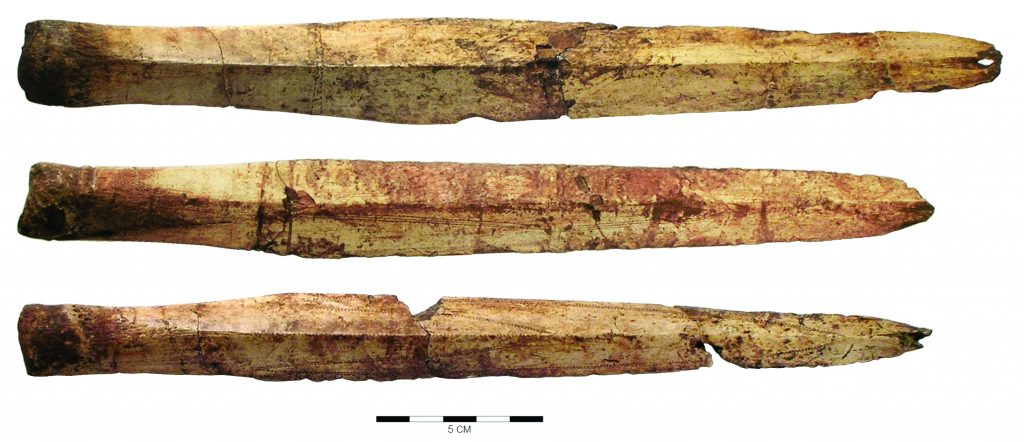
Prior to the appearance of these cultures, human occupation in the area had been sparse and had featured less sophisticated technology. The few burial sites that we know of might have contained several artifacts of impressive quality, but they were usually isolated, as if created by transitory occupants who soon moved on. In Maine and at PAC, however, true cemeteries, as we know them, would seem to indicate thriving groups of maritime hunters with complex tools and trading routes stretching westward to the Great Lakes. Their discretely marked territories, technological complexity, mortuary ritual elaboration, and widespread trade connections set them apart from both earlier and later populations.
Another characteristic they shared was their sudden cultural collapse and disappearance sometime between 3,800 and 3,400 years ago. In the north, the Maritime Archaic gave way to Pre-Dorset Palaeoeskimos (as they are known in the literature) that had recently arrived from Siberia. And in the south, the Red Paint People, along with their neighbors in temperate north-eastern North America, gave way to a wave of immigrants from the southern Appalachians.
Unresolved, however, was the important question of how these two groups related to one other. In this regard, Jim and I held diametrically opposed views.
Mine was that, though sharing many close similarities, the two groups had different origins. I saw the Red Paint People as locals, descended from northward moving immigrants with cultural ties down the Atlantic coast to the Carolinas. Though both cultures were expert maritime hunters, I noted, their prey differed. Maritime Archaic hunters pursued walrus and caribou, while the Red Paint People were the world’s earliest swordfish hunters, and also fished for cod and hunted moose and deer. Moreover, there remains a large gap of over 350 miles between the southernmost Maritime Archaic sites and the northernmost Red Paint cemetery. Similarities between the two groups, I thought, probably arose either through the social interaction one might expect from two widely-ranging maritime cultures (and were especially evident in the flaked quartzite projectile points from northern Labrador found in several Red Paint cemeteries that must have traveled through the hands of Maritime Archaic traders). Or perhaps they shared common descent from some earlier culture.
Jim had demonstrated that the Maritime Archaic descended from basically the same ancestral stock as the Red Paint People. But I felt he glossed over the details of this common-ancestry hypothesis so as to posit that both were manifestations of a Maritime Archaic that originated in Labrador and eventually spread to Maine. We remained at friendly loggerheads for decades, unable to resolve the issue with the archaeological tools at hand. Then an entirely new avenue of research opened up: human paleogenetics.
In the early 1990s, visionary Italian geneticist Luca Cavalli-Sforza (1922–2018) and colleagues began the Human Genome Diversity Project (HGDP) at Stanford University’s Morrison Institute. The aim was to record the genetic profiles mainly of relatively small Indigenous populations, which geneticists thought were best suited for reconstructing human population movement and change over time in any given region (due to their relatively low rates of genetic exchange with neighbors through a process known as admixture). The HGDP’s strategy worked well and progress was rapid. In 1994, only three years after its formation, Cavalli-Sforza and two co-authors published The History and Geography of Human Genes, which synthesized research from a wide array of fields so as to explain how the world came to be populated.

The book, published by Princeton University Press, received global accolades. But it also attracted strong criticism from lay readers on both sides of the political spectrum. One Indigenous leader called it “unethical, invasive, and may even be criminal. It violates the group rights [of] Indigenous peoples around the world.” Meanwhile, Cavalli-Sforza was receiving hate mail from right-wing extremists who bristled at their genetic connection to parts of humanity they imagined to be “inferior.”
Yet despite these criticisms, Cavalli-Sforza’s work inspired other geneticists to develop human genetic studies by extending their inquiries further back in time. Much of the pioneering work of recovering ancient DNA from archaeological bone, for instance, was done at Svante Pääbo’s lab at the Max Planck Institute for Evolutionary Anthropology at Leipzig, Germany. The group’s major breakthrough came in 2010, with published studies of three ancient genomes, including Neanderthals, a new species of archaic human called Denisovans (recognized solely by DNA retrieved from a finger bone), and, shifting to North America, a 4,000-year-old male from Greenland. As Harvard geneticist David Reich wrote in Who We Are and How We Got Here: Ancient DNA and the Science of the Human Past, the early and mid-2010s were marked by additional new discoveries.
It wasn’t long before a multinational team of paleogeneticists led by Ana Duggan of McMaster University, located in the Canadian city of Hamilton, tackled the issue of Maritime Archaic origins and disappearance. Duggan’s group relied on mitochondrial DNA (mDNA) from skeletal remains found in Labrador and Newfoundland dating roughly from between 7,500 BC and the early historic period. Team members summarized their results as follows:
By examining the mitochondrial genome diversity and isotopic ratios of 74 ancient remains in conjunction with the archaeological record, we have provided definitive evidence for the genetic discontinuity between the maternal lineages of these populations. This northeastern margin of North America appears to have been populated multiple times by distinct groups that did not share a recent common ancestry, but rather one much deeper in time at the entry point into the continent. (Emphasis added.)
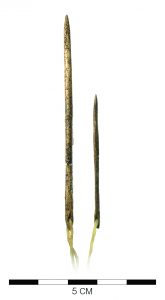
In regard to the Red Paint People, Reich’s lab at Harvard Medical School analyzed material from the Nevin site in Blue Hill, Maine—the only known Red Paint cemetery that is likely ever to produce well-preserved human remains. Reich’s analysis was not confined to mDNA (which, unlike nuclear DNA, is transmitted through the maternal line, and so cannot address paternal ancestry), and focused instead on autosomal DNA (aDNA) found in cell nuclei, thereby adding information on the paternal line. (This addition can be critically important because, as Reich’s lab had demonstrated, a population can be founded by males and females with very different origins.) The Reich team has yet to publish comprehensive results of its Nevin site analysis. But from what I have heard, their work will confirm the existence of genetic discontinuities between the Red Paint People and later populations in the region, much as with Duggan’s work in regard to the Maritime Archaic.
But this is where events took a strange turn: It was when Duggan’s group announced that they’d gained the capacity to analyze aDNA, and made known their plans to apply this technology to the male genome of their Labrador/Newfoundland skeletal sample, that a sense of apprehension seemed to spread through some quarters of the paleogenetic community.
During the summer of 2020, amid the COVID-19 pandemic and Black Lives Matter protests, Duggan’s project went noticeably quiet. I inquired among team members with whom I regularly communicated, but received oblique and evasive responses about the pace of research and publication. Suspecting that this might be related to sensitivities surrounding Indigenous populations (a topic that has consumed Canadian academia in recent years), I contacted Duggan directly, expressing concern that her valuable work might not be published.
My interest related to my own longstanding focus on the Red Paint People and their relationship to the Maritime Archaic, as described above. In the early 1990s, with Jim Tuck’s approval and guidance, I’d undertaken extensive isotopic research on the PAC skeletal sample to explore dietary differences between PAC and several prehistoric Maine populations. And it was on the basis of this established engagement with the subject that I made my inquiries of Duggan. “Science, after all, is about openness and transparency in communication,” I wrote. “Has your group had requests from Indigenous people that this work not be carried forward?”
In (partial) response, Duggan replied that she and her team remained “invested” in the project, but were proceeding in line with “standards and ethics of research suitable for the 21st century”—standards that specifically “include the continued support of present-day Indigenous communities as well as full institutional ethics approval.” These standards, which she described as “common to ancient DNA genomics research with Indigenous populations across North America,” require that “discussions and agreements” with Indigenous communities take place before “yet another ancient genome” could be published.
As described below, however, the Port au Choix sample is far from just “yet another” lineage. And I asked whether the Indigenous permissions that Duggan’s group apparently had obtained for their earlier research on mDNA had been revoked. As of this writing, I have received no response. Duggan told me that my own concerns were “meaningless when compared to the distress caused to Indigenous communities by the historical treatment of their ancestral remains.” But she failed to provide detail on this potential “distress.” Until this discussion, a half century had passed with no complaint, to my knowledge, from any Indigenous group, in regard to this specific area of study.
Duggan’s response struck me as odd given the circumstances of the Port au Choix discovery. Had that discovery occurred only a few years earlier, the bones and amazing artifacts likely would have been thrown away or taken home by members of the construction crew. Tuck’s excavations saved all these scientifically precious specimens, and had resulted in the publication of important research, to the incalculable benefit of anyone interested in North American Indigenous history.
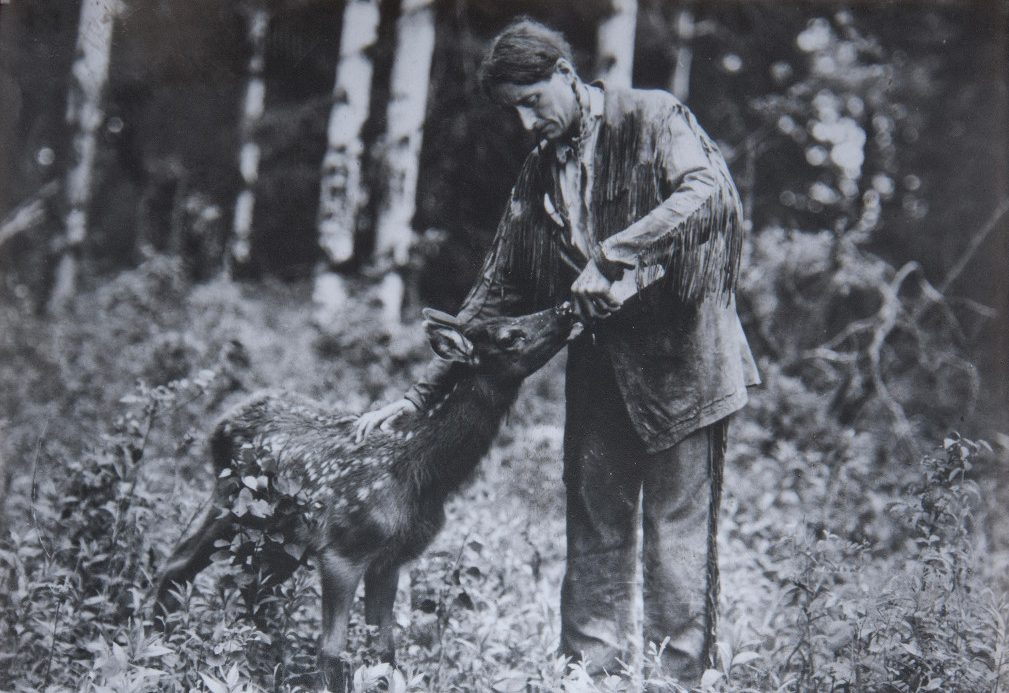
We now know that Tuck’s three loci were but a small portion of a much larger cemetery unparalleled in the Northwest Atlantic region, if not beyond. Unfortunately, no further excavations have been conducted. More graves reportedly have been dug up by construction equipment. But the fate of these items is unpublished and unknown to me or to any Canadian archaeologist I have consulted. In the current political climate, the very fact of their existence is now apparently seen as awkward, even taboo—an ironic reversion to an unenlightened period when few cared about the history of Indigenous peoples.
When the Maritime Archaic tradition vanished, it was replaced, as noted earlier, by unrelated Paleoeskimos, an Arctic people who had then recently derived from Siberia. Following their own disappearance, more recently arrived inhabitants migrated from Labrador, these probably being ancestors of the historic Beothuk, who still lived in the region when Europeans arrived. The last surviving Beothuk, a woman named Shanawdithit, died of tuberculosis in 1829. And since that time, there has been no descendant Beothuk community with whom Duggan, or anyone else, could engage in the “discussions and agreements” she’d described to me.
And even if there were, moreover, Duggan’s own research has demonstrated that the Beothuk were not descended from the Maritime Archaic people of Port au Choix. The only community Duggan might be referring to is the (genealogically unrelated) Newfoundland Mi’kmaq community, whose ancestors arrived on Newfoundland from Nova Scotia in the 18th century, several hundred years after the arrival of Europeans.
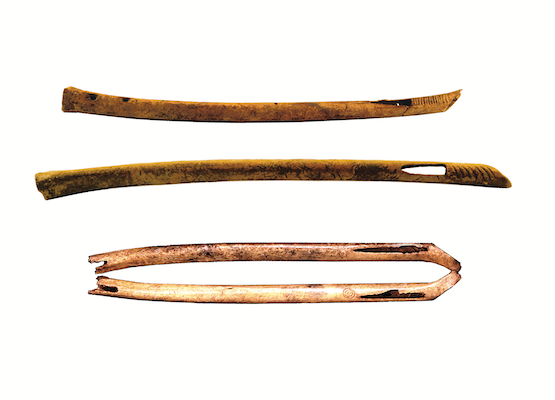
In a 2017 article published in Science, Ann Gibbons wrote about the power of DNA analysis to “bust” the myths associated with Europeans’ origins: “Despite their tales of origin, most people are the mixed descendants of many migrations… As techniques for probing ethnic origins spread, nearly every week brings a new paper testing and then falsifying lore about one ancient culture after another.” Gibbons properly describes this as a positive development. But if this principle is true for the so-called old world, why is it untrue in regard to Indigenous peoples? The only way one might consider Duggan’s research to be offensive or controversial is to such extent as one might wish to preserve the idea of Indigenous peoples as staking out an unbroken genetic (and therefore moral) claim to this or that part of North America. Certainly, I can think of no other basis on which Duggan might be required to secure the permission of modern First Nations (as they are known in Canada) to conduct scientific research on populations that haven’t existed for thousands of years.
As it turned out, I had been naïve about the extent to which this kind of politics was now interfering with paleogenetic research. The ideologically correct approach had been articulated at a 2019 Brown University conference titled “State of the Field: The Ancient DNA Revolution in Archaeology.” There, Robert Preucel of Brown’s Haffenreffer Museum presented a roster of speakers who laid out what they regarded as state-of-the-art ethical standards in the field. They advised audience members to pursue a “commonly agreed set of best practices” with “descendant communities”—especially when paleogenomic conclusions challenge, or conflict with, community knowledge about the past. Folklore and myths must be taken into account, and we must discourage the idea of science “controlling the narrative.”
Moreover—and here is where I began to understand why Duggan’s lab had suddenly gone dark on this issue—“Even if we can’t seek consent from the study subjects themselves for inclusion in our ancient DNA studies, descendant-affiliated or geographically proximate communities should be consulted and engaged prior to the start of research because they may wish to speak for the ancestors” (my emphasis).
This anti-paleogenetic movement, as I would describe it, has roots dating back to the American Indian Movement (AIM) of the 1960s. AIM emerged among urban-dwelling Indigenous neighborhoods, not on Indian reservations (though AIM does deserve credit for calling out the poor living conditions in those communities). This was an important cause. But over time, AIM became more radicalized thanks to the influence of activists who sought to block scientific research in the name of cultural sensitivity. Eventually, this movement led to the passage of the Native American Graves Protection and Repatriation Act (NAGPRA) of 1990, a US law requiring federally funded entities to return “cultural items” (as broadly defined) to the ancestors or cultural affiliates of the communities from which those items originated.
When NAGPRA was passed, it was presented as a balanced means to accommodate both scientific inquiry and the rights of Indigenous communities seeking to protect the remains of their ancestors. But the application of the law became more expansive over time—as the demands of Indigenous communities typically are seen as more morally compelling (especially to academics) than those of the researchers who populate this field of scientific inquiry. This is especially true now that the scientific work of researchers has been lumped in with the (apparently ongoing) ideological and historical sins broadly described under the rubric of “settler colonialism.”
At the aforementioned Brown session, for instance, genetic analysis was denigrated because it serves to deny “the humanity of the individuals we study [and to not] regard them as human relatives who deserve respect.” This disrespect is said to extend even beyond skeletal individuals, to DNA found in “coprolites, dental calculus, cultural materials, or soil.” It is preferable, we are told, to put away our scientific instruments, and instead consider the oral histories of local community members. As a result, established academics in this field are not only backing away from future projects, but even apologizing for their invaluable discoveries of the past. Geneticist Christiana Scheib of the University of Tartu in Estonia, for example, reports that she feels “disappointed that I hadn’t known better to do it a different way in the first place.”
Moreover, it proved but a short jump from the denunciation of Western science to the insistence that traditional folklore and origin stories be protected from scientific scrutiny. In some academic quarters, it is now seen as insulting to bring up the fact that humans arrived in the Americas from Asia via Beringia during the Last Glacial Maximum about 16,000 years ago, as this fact conflicts with spiritual notions that, in many cases, roughly correspond to Christian creationist myths.
I should say that I don’t know any archaeologist or physical anthropologist active in 1990 who opposed the passage of NAGPRA outright. Indeed, everyone I knew welcomed it, as did I. And even those of us who are critical of the way NAGPRA has been applied generally have long experience with Indigenous individuals and communities, many of whom are sincerely interested in our research and have a clear and unsentimental understanding of their own genealogy, even if the media naturally focus on those leaders who give voice to contrary opinions. We also pay attention to traditional knowledge. (Linguist Norbert Francis has properly emphasized the importance of studying pre-literate traditional narrative genres, even as he recognizes that a sense of objectivity must be retained in regard to new findings in evolutionary science and population genetics.) Our real concern, subsequently borne out, was that stakeholders would use the law to expand their own authority—including non-Indigenous consultants and activists who inserted themselves as advisors to tribal leadership.
Much of this comes down to faddish ideological trends (including the “oikophobia,” or Western self-hatred, identified by Roger Scruton) that are by now well-known to Quillette readers. In the context of the anti-vaccination movement, for example, scientist and physician Dr. David Hotez recently commented that there is a “proliferation of attacks against science… in favor of alternative views, often linked to the targeting or harassment of individual scientists.”
But there is also a more concrete political dimension to these campaigns. Indigenous groups typically have membership requirements that depend upon (or at least relate indirectly to) “blood quantum,” i.e., the degree to which a person is descended from “full-blooded” ancestors. As anthropologist Ryan W. Schmidt has explained, these rules could threaten the integrity of Indigenous groups because, for example, “over 60 percent of all American Indians are married to non-Indians [and] by the year 2080, less than 8 percent of American Indians [are expected to] have one-half or more Indian ‘blood.’” By demonstrating the degree to which today’s Indigenous communities may themselves be entirely separate from ancient precursors, paleogenetics can be seen as a further threat to the ideal of Indigenous communities as homogenous, genetically distinct populations rooted timelessly in specific geographic areas.
Indeed, paleogenetic research has demonstrated that many Indigenous groups are fairly recently arrived in what is now considered their “traditional” territories. The earliest known human discovered in Greenland’s southern region, for instance, was a male member of the Paleoeskimo Saqqaq people. In 2010, archaeologists recovered a hair ball yielding genetic material that showed his genetic ancestry lay not in Nunavut, a mere 200 miles across the Davis Strait, but rather with the Nganasan, Koryak, and Chukchi peoples, 3,000 miles away in Siberia. Thus it is possible, even likely, that the Saqqaq people arrived in the New World at a much later date than the first humans to cross from Siberia into Alaska. This finding underscores a basic point emphasized by Gibbon: Humans move around a lot.
And this penchant for moving around didn’t end when humans arrived in North America. In the north-eastern part of North America, south of the St. Lawrence River and Gulf, for example, the arrival of mainly Basques and French settlers in the late 16th century set off a scramble among Indigenous groups—not generally to escape oppressive “settler colonization,” but rather to gain access to the new arrivals for purposes of trade and the formation of military alliances against existing enemies. This competition set off a series of long and bloody wars, which in turn led to the extermination of whole Indigenous cultures—true genocides, whose human toll was exacerbated by the epidemics brought from Europe.
These wars, in turn, eventually forced swathes of Algonquian-speaking peoples to move westward, pursued by Iroquois enemies in many cases, into what the French called the Pays d’en Haut, a vast area west of Montreal that extends to the Great Lakes, Ohio, and Illinois. Here, whole new cultural identities formed from the refugees (much in the same way that the demographic map of Europe was massively redrawn during the late stages of the Roman empire, with Goths, Gauls, Vandals, and dozens of other groups criss-crossing the continent in a bid to survive). The result is that most federally-recognized tribes in the American east and Midwest are late-colonial-to-recent in origin, and are largely populated by the descendants of widely scattered and, in some cases, vanished communities. The development of a homogenizing Plains Indian Culture resulted from a roughly analogous process. In many cases, paleogenetics is revealing that even those “true” homelands were not as ancient as once believed.
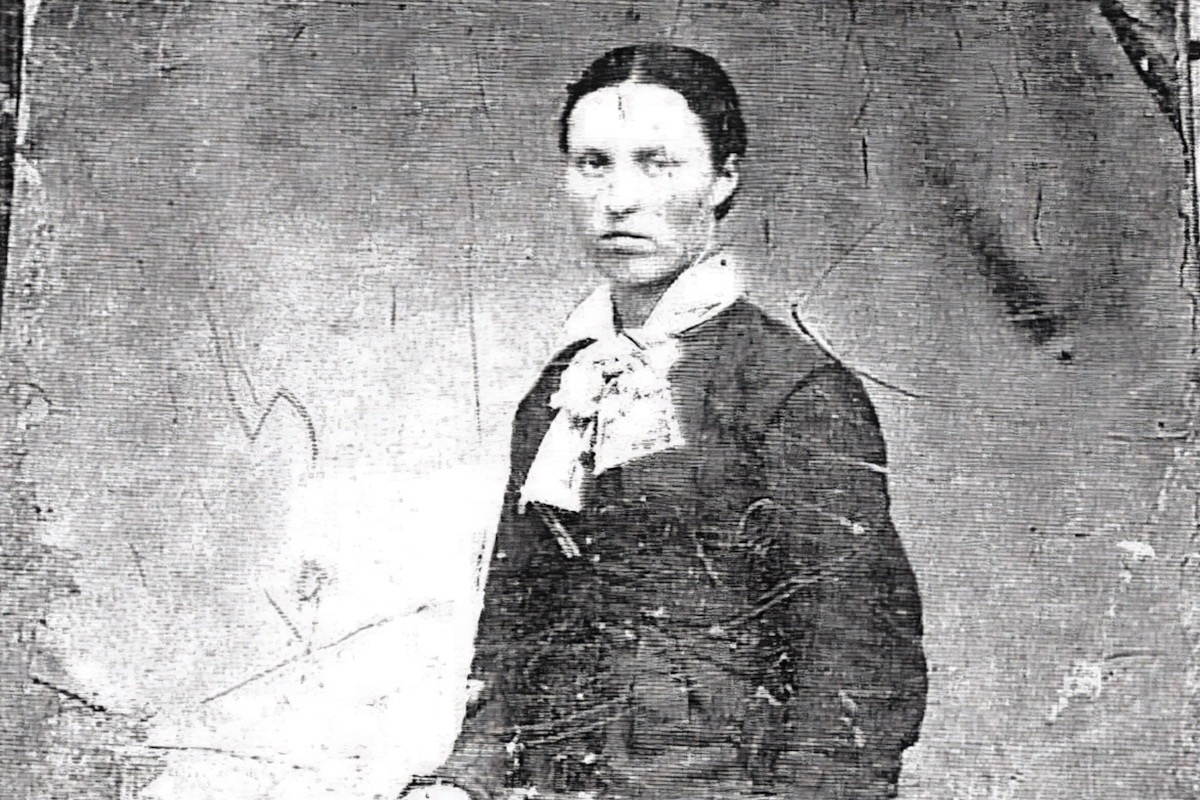
In the American Southwest, by late prehistoric times, every population apart from the Rio Grande Pueblos was turned upside down demographically in cataclysms that featured either huge die-offs or mass migrations. Roughly 75 years before the Spaniards arrived, the Classic Period (AD 1300–1450) Hohokam of central and southern Arizona had vanished, perhaps admixed with immigrants from northern Mexico and southward-migrating Puebloans who’d abandoned their villages in the Four Corners area. Farther west, in California, equally transformative events were brought about after 1700 by the Spanish, who created a highly coercive colonial system that extensively reorganized Indigenous communities around Catholic missions.
Throughout North America, certainly, the arrival of Europeans brought tremendous forces for change, often accompanied by unconscionable cruelty. But this occurrence didn’t represent the disruption of a stable, pacifistic land mass whose peoples had self-organized in their current state since the beginning of time—but rather a new challenge to a continent that, much like Europe itself, perpetually featured migrations, conquests, and tragedies wrought by competition among different groups. Ultimately, these are the stories that many people (including many non-Indigenous people) don’t want told—much less verified through ongoing paleogenetic research—as they disrupt our mythologized image of the Indigenous Americas as a sort of secular Eden.
And of course, it is their right to militate against science. But it is disheartening to see, as Francis does, that scientists themselves are falling in with these campaigns through “a widespread self-censorship among other scholars associated with work in Native American communities in anthropology and related social sciences.”
Even those who do not follow paleogenetic controversies closely may know Kennewick Man, the name assigned to the 9,000-year-old remains of a prehistoric Paleoamerican man found in Washington state 25 years ago. In that case, the remains were found to be related to tribes still present in the area where Kennewick Man was found (although this finding remains contested by some). But in many other cases, such local linkages have been harder to find. DNA from two 11,000-year-old skeletons discovered the following year in Spirit Cave, Nevada, for instance, were found to be more closely related to living Indigenous South Americans than to living Native North Americans. A much younger skeleton (about 700 years old) from Lovelock Cave, Nevada, was found to be a close genetic match with the Spirit Cave remains, and so also contained evidence of ancestry from a Mexican-related population. Nevertheless, in 2018, all three skeletons were handed over to the local Paiute-Shoshone for reburial because they had been found on their (currently understood) aboriginal homelands. “Repatriating” human remains to groups in this way has simply become the path of least resistance.
Also instructive is the case of 4,000-year-old human skeletons from the Nevin site in Blue Hill, Maine, which are held at Harvard’s Peabody Museum. These are the only well-preserved Red Paint People skeletal remains ever found, and thus are critical to resolving such issues as the relationship between them and the Maritime Archaic of Newfoundland-Labrador. They were analyzed at Reich’s Harvard lab five years ago, but the results remain unpublished (though verbal reports indicate that they bear no close relationship to the Penobscot or any of the other federally-recognized Indian tribes in Maine).
The wonderful collection of artifacts found with the Nevin skeletons were housed at a museum named for a different Peabody, the R. S. Peabody Museum at Phillips Academy in Andover, Massachusetts. Absent the publication of the Nevin DNA analyses, the director of that museum decided to honor a request from the Penobscots for their repatriation—even though he was apparently fully aware of the surrounding paleogenetic facts. And so the remarkable Nevin collection was never adequately catalogued or photographed, much less fully analyzed and reported. Requests from researchers to tribal officials about their whereabouts reportedly have, to my knowledge, gone unanswered.
Of course, some might say that there is only theoretical value in knowing about early human life in North America—so why not simply accede to the requests of Indigenous peoples? By way of answer, consider that Reich’s lab at Harvard has published a staggering amount of paleogenetic data, much of it relating directly to human wellbeing. Svante Pääbo’s lab is similarly productive, as illustrated by a 2020 paper published in Nature, entitled ‘The major genetic risk factor for severe COVID-19 is inherited from Neanderthals.’ It identifies a gene cluster on chromosome 3 that is a “major genetic risk factor for severe symptoms in patients,” and shows that the risk is conferred by “a genomic segment of around 50 kilobases in size that is inherited from Neanderthals and is carried by around 50% of people in south Asia and around 16% of people in Europe.”
Such discoveries have been made regarding all manner of diseases. And we will never know how many new discoveries we may have missed now that human remains are being taken from—or freely given away by—scientists in the name of politics. It is past time for science to reassert itself for the benefit of all humanity.






